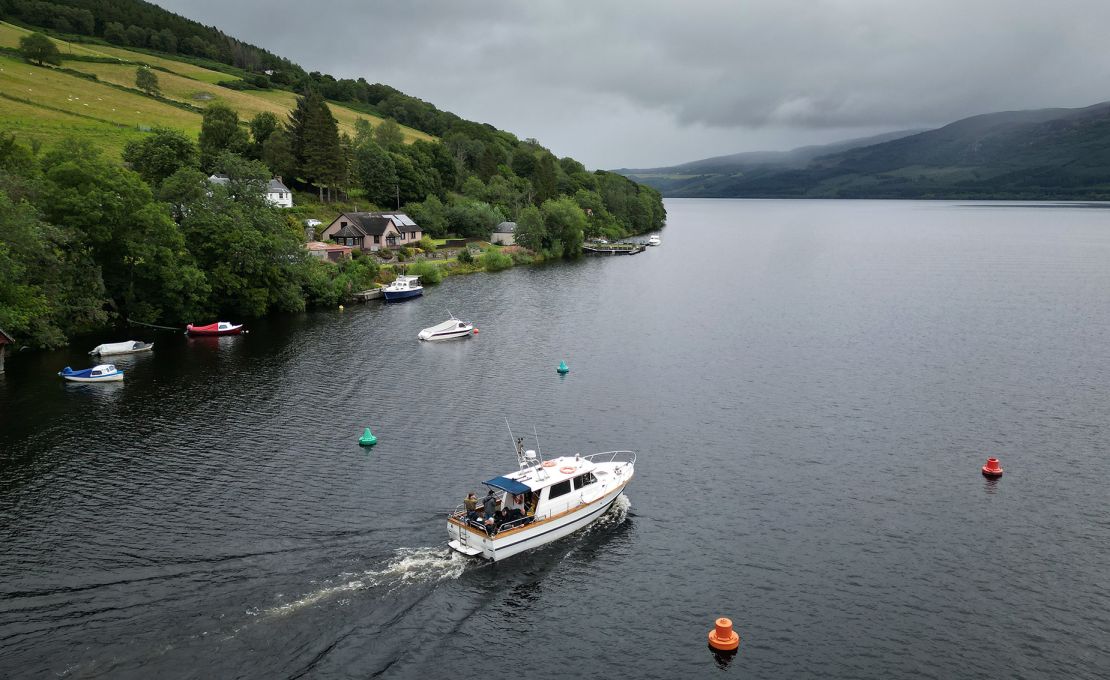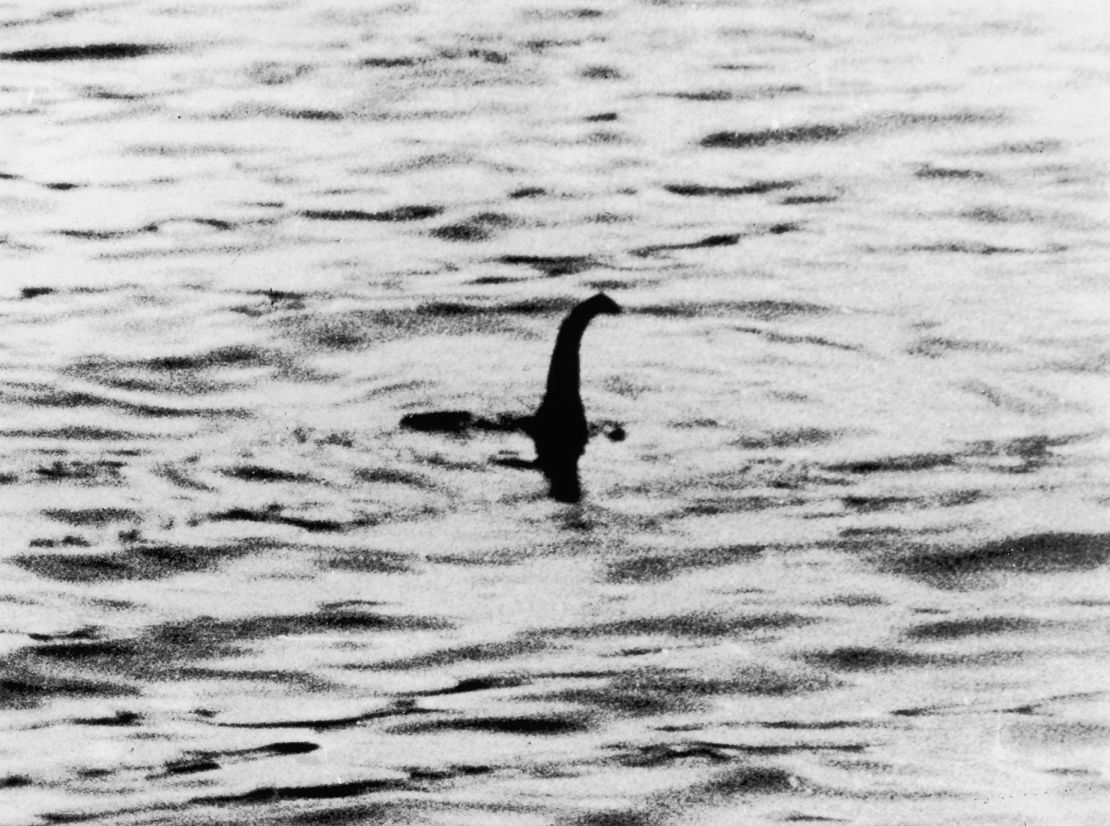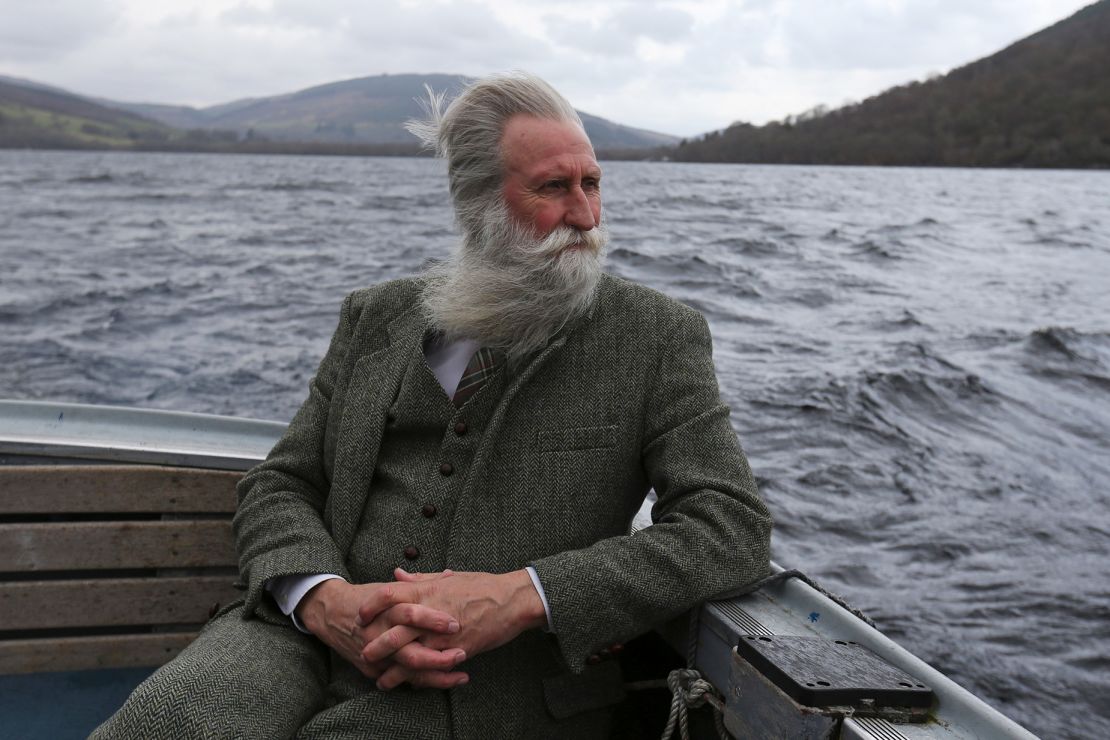Editor’s Note: Sign up for Unlocking the World, CNN Travel’s weekly newsletter. Get the latest news in aviation, food and drink, where to stay and other travel developments.
It’s not the volume of water in Loch Ness that impresses, although that’s substantial. It is, after all, 23 miles long with steep walls that plunge into a 754-foot abyss deep enough to submerge Edinburgh Castle twice over.
It’s the unsettling darkness that stands out. Peat washes into the loch from surrounding rivers and streams, creating water as rich a brown as the tea that flows from pots in guesthouses in the nearby village of Drumnadrochit and the Highlands beyond. But it’s cold, bitterly cold, averaging around 40 F (4 or 5 C) year-round.
“You could be swimming next to a 400-foot submarine, it would be two feet in front of you, and you would not see it,” says Alan McKenna, social worker by day and, in his free time, founder of the Loch Ness Exploration research group. “It’s like a lost world down there.”

90 years since the first ‘monster’ photograph
Unless you’ve been hiding under a rock in a water-filled valley formed by the shifting of tectonic plates half a billion years ago, you’ll be familiar with Loch Ness and its mysteries.
On November 12, it’ll be 90 years since factory worker Hugh Gray took the first photograph of the Loch Ness “monster.”
Earlier that year, in April 1933, hotel manager Aldie McKay set off what would become an international frenzy through her reported shoreside sighting of an enormous, whale-like beast.
Countless “monster” sightings, hoaxes, searches and expeditions later, the enigma endures. McKay’s hotel in Drumnadrochit has been turned into the new $1.8 million Loch Ness Centre and last August hundreds of Nessie fans gathered at the loch for the biggest monster hunt in 50 years. The findings, perhaps unsurprisingly, were inconclusive.
Brushes with the occult
Even when visiting on a dreary Tuesday afternoon, the steel-gray sky reflecting off the loch’s restless undulations as anorak-clad day-trippers mill from shabby tearoom to souvenir store, Loch Ness is still a fair bit more than the tourist trap of expectation.
For many it’s an amusing, perhaps underwhelming, detour on a trip to the Isle of Skye or to Cairngorms National Park.
There is, however, genuine eerie lore in these parts, from Irish monk Saint Columba banishing a sea serpent from the River Ness in the sixth century, to English occultist Aleister Crowley’s devilish antics at Boleskine House on the loch’s southeast side. The house was later owned by Led Zeppelin’s Jimmy Page, then gutted by fire in 2015, and is now under refurbishment and sporadically open for tours.
And that’s not to mention the animated corpses that a hapless local minister is said to have had to return to their graves in Boleskine churchyard in the 17th century.

Of men and monsters
But no legend will ever surpass the monster in the public imagination. Amateur naturalist Adrian Shine, founder of the Loch Ness Project research group, has, since 1973, dedicated a full half-century of his life to scientific exploration of the UK’s largest lake by volume.
In recent years he has stepped back from public engagements, but his elegantly white-maned, magnificently bearded figure, somewhere between Rasputin and Santa Claus, is the guide in video form through the center’s new multimedia exhibition.
He’s also been an inspiration and mentor to generations of Nessie enthusiasts. That includes people like McKenna, who makes the three-hour trip from Edinburgh each month to lead a volunteer hunt, and Steve Feltham, who’s been living in a caravan beside the loch since 1991.
“It’s a really bizarre extended family of Loch Ness enthusiasts,” says McKenna, his love for the project glowing in every word. Having Shine talk him through his Highlands fieldwork “was one of the most amazing experiences ever,” says McKenna. “Give me someone that is so passionate and so motivated to share that with everybody else. It’s phenomenal.”
What lies beneath
For this is the biggest secret of all. Nessie hunters are not, contrary to popular assumption, fantasists battling against reason and common sense. What we discovered at Loch Ness is a community of naturalists united by a love of environmental science and a joy in life’s boundless mysteries – both terrestrial and existential.
Not a person we spoke to is convinced a multi-humped serpent or long-necked plesiosaur splashes in the depths — and yet the devotion to investigation is deep and heart-felt. “There’s a lot of me that believes there is a monster out there,” says Alistair Matheson, skipper of the Loch Ness Project, who takes guests out on sonar-equipped cruises. “What your monster may be differs from person to person. I think for me, there’s a mystery here, and that’s what I firmly believe in.”
No ordinary lake

“If there is something in Loch Ness, it does not play by the rules,” says McKenna. “People are still seeing things that they can’t explain and I think that’s worth looking into. If it turns out these are all caused by natural phenomena, that’s fine. We’re still doing what we love.”
For the truth is that this is no ordinary lake. Despite its wintry temperatures, Loch Ness never freezes over due to the thermocline effect, which means cooler water sinks and is replaced by warmer water from below.
These shifting layers of water at different temperatures create huge underwater waves, forming a surface current that can carry logs and other debris along against the wind – which can be mistaken for the tail or neck of a creature swimming against the current.
Water mirages
Then there are occasional water spouts, whirling columns of mist and air that, when the water is calm and with no way of judging size, can look like the long neck of a thrashing beast.
McKenna recalls his encounter with one: “I heard this massive splash off to my right, I didn’t catch the splash on film. But what I did catch afterwards was this huge spray coming off the water.”
It was Adrian Shine who burst his bubble and explained its earthly origin. But, says McKenna, “Loch Ness is so fascinating that it can cause these mirages. It’s a bit of a riddle, the whole place.”
Too cold for reptiles
Those famous Nessie humps, explains Shine by video in the center’s exhibition, are typically caused by boat wakes. When heavy vessels pass through a long, deep and narrow lake such as Loch Ness, it can create a particular phenomenon called a Kelvin wake, whose ripples look remarkably like bumps when viewed from a low angle such as the shoreline.
The idea that there might be a dinosaur-type creature living in the loch was discounted many long years ago. A study found there is no reptile DNA in the water and it is simply too cold for such a creature to survive. Mammals would fare better, but in those impenetrably dark waters, plants cannot thrive and it’s a paltry food chain for a growing beastie.

Fish and eels
The loch is connected to the sea as well as numerous rivers, so one of the most popular theories is that the monster is an animal, such as a seal or a whale, passing through.
Then there are the fish theories, says Shine. There’s “sturgeon blundering in from the sea,” but they “wouldn’t find a spawning partner.” Artificially introduced catfish is another suggestion, but the water’s too cold for them to breed. A 2019 study found a substantial amount of eel DNA, bolstering the theory that Nessie is an overgrown eel, but that too has had its debunkings.
Hunt technology
Core samples have been taken from the lake bed, with researchers getting a look at 12,000 years of mud, marked by coal burning from the industrial revolution and radiation from atomic testing in the Pacific.
A fleet of research vessels swept across the loch in the 1980s, mapping the underwater terrain like a “sonar curtain,” says Matheson, “cutting edge technology back then.”
Echo sounding allows Matheson to track the depth of the loch on his boat outings, while hydrophones – underwater microphones - are McKenna’s best friends.
“If you don’t have a submarine, if you don’t have an underwater drone, you’re very, very limited,” he explains. “What really helps us is our hydrophone. We don’t have eyes down there, but we’ve certainly got ears.”
Don’t stop believing

The monster quest that drew crowds from around the world this August is set to return, says McKenna and the team at the Loch Ness Centre, with hopes of it perhaps becoming an annual event, with increased investment in research and technology.
Until then, the Loch Ness Exploration group meets monthly on the loch and is free and open to everyone — believers, sceptics and agnostics alike: details are on the public Facebook page. The monster’s existence has never been proved, but it can’t be disproved either. And it’s that exquisite leap of faith that keeps believers going.
That’s the secret of Loch Ness. Meeting on the shores one sleepy afternoon as the clouds meander above, the grass ripples on the living hills and the peat-brown waters lap quietly below, visitors may find out a little about our world, and a lot about ourselves.





